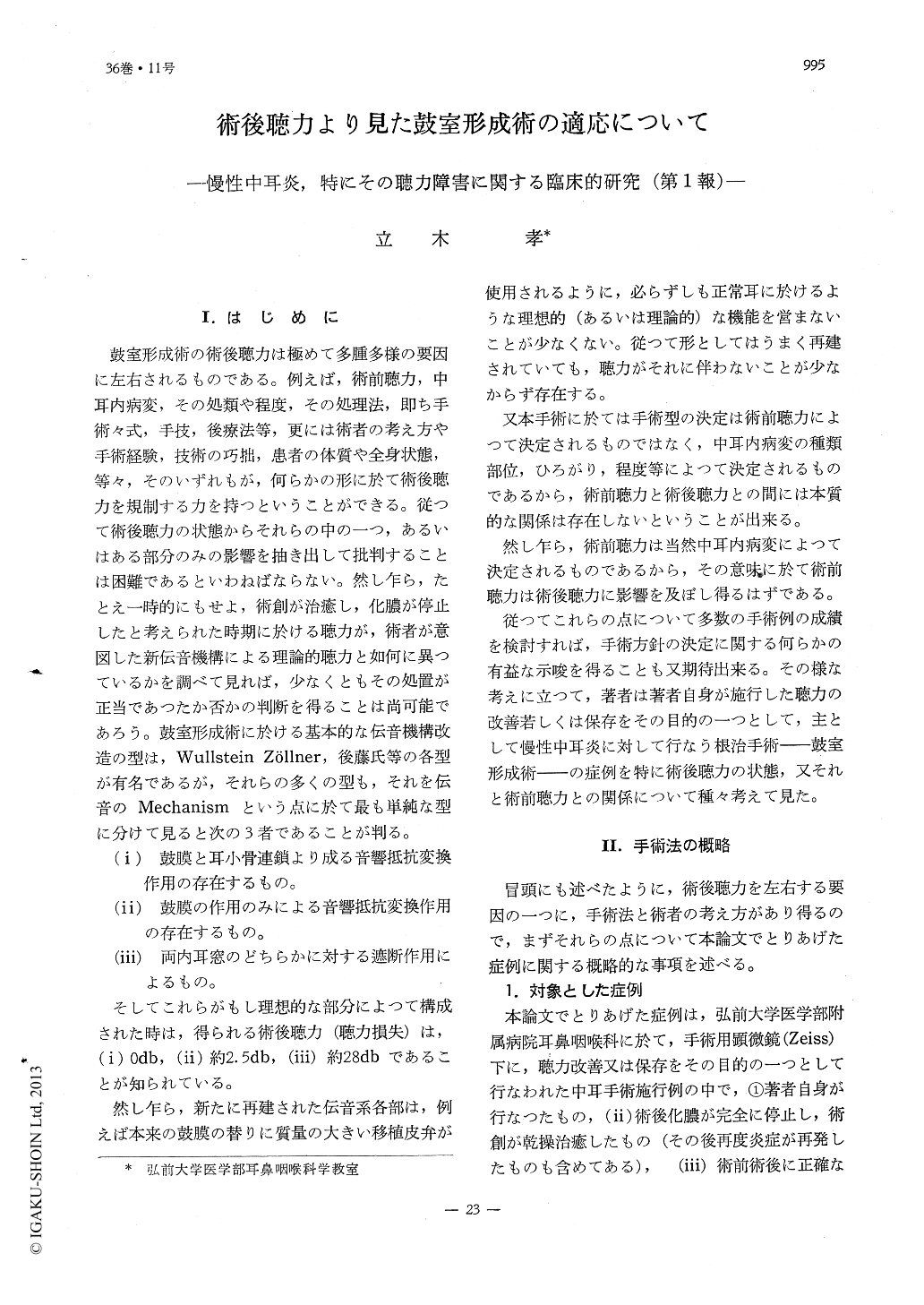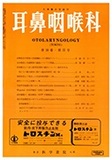Japanese
English
- 有料閲覧
- Abstract 文献概要
- 1ページ目 Look Inside
Ⅰ.はじめに
鼓室形成術の術後聴力は極めて多腫多様の要因に左右されるものである。例えば,術前聴力,中耳内病変,その処類や程度,その処理法,即ち手術々式,手技,後療法等,更には術者の考え方や手術経験,技術の巧拙,患者の体質や全身状態,等々,そのいずれもが,何らかの形に於て術後聴力を規制する力を持つということができる。従つて術後聴力の状態からそれらの中の一つ,あるいはある部分のみの影響を抽き出して批判することは困難であるといわねばならない。然し乍ら,たとえ一時的にもせよ,術創が治癒し,化膿が停止したと考えられた時期に於ける聴力が,術者が意図した新伝音機構による理論的聴力と如何に異つているかを調べて見れば,少なくともその処置が正当であつたか否かの判断を得ることは尚可能であろう。鼓室形成術に於ける基本的な伝音機構改造の型は,Wullstein Zöllner,後藤氏等の各型が有名であるが,それらの多くの型も,それを伝音のMechanismという点に於て最も単純な型に分けて見ると次の3者であることが判る。
(ⅰ)鼓膜と耳小骨連鎖より成る音響抵抗変換作用の存在するもの。
On 120 ears operated by the author in the period of last 4 years, hearing losses before and after tympanoplasty were statistically examined. In these cases, the type of operation was decided only by the middle ear pathology observed during the operation;at first the middle ear pathology was removed as completely as possible, and then the reconstruction for hearing improvement was taken into consideration. The ears were divided into following three groups according to the type of operation.
Group 1: Subjects operated by type Ⅰ or Ⅱ (Wullstein). In this group 36 ears were included.
Group 2: Seventy ears operated by type Ⅲ were included.
Group 3: Fourteen ears operated by type Ⅳ.
Two main findings were as follows:
1) Concerning the relation between pre-and post-operative hearing loss, results were nearly equivalent for all these three groups, but, so far as only the post-operative hearing loss was considered, clear differences were present among the groups. Post-operative hearing loss were 21. 9db, 33. 9db and 45. 5db in its average, corresponding to the group 1, 2 and 3.
2) In the cases of group 1, significant correlation was found between pre-and post-operative hearing losses, but, in cases of group 2, it was not found. If the fact that typand Ⅱ are the conservative type of operation in respect of the sound transmission mechanism and type Ⅲ is the radical or reconstructive type of operation is taken into consideration, above mentioned findings can be reasonably understood.
In the conclusion the author maintained that the preoperative hearing loss should be refered more thoroughly in the preoperative consideration for indication of the type.

Copyright © 1964, Igaku-Shoin Ltd. All rights reserved.


